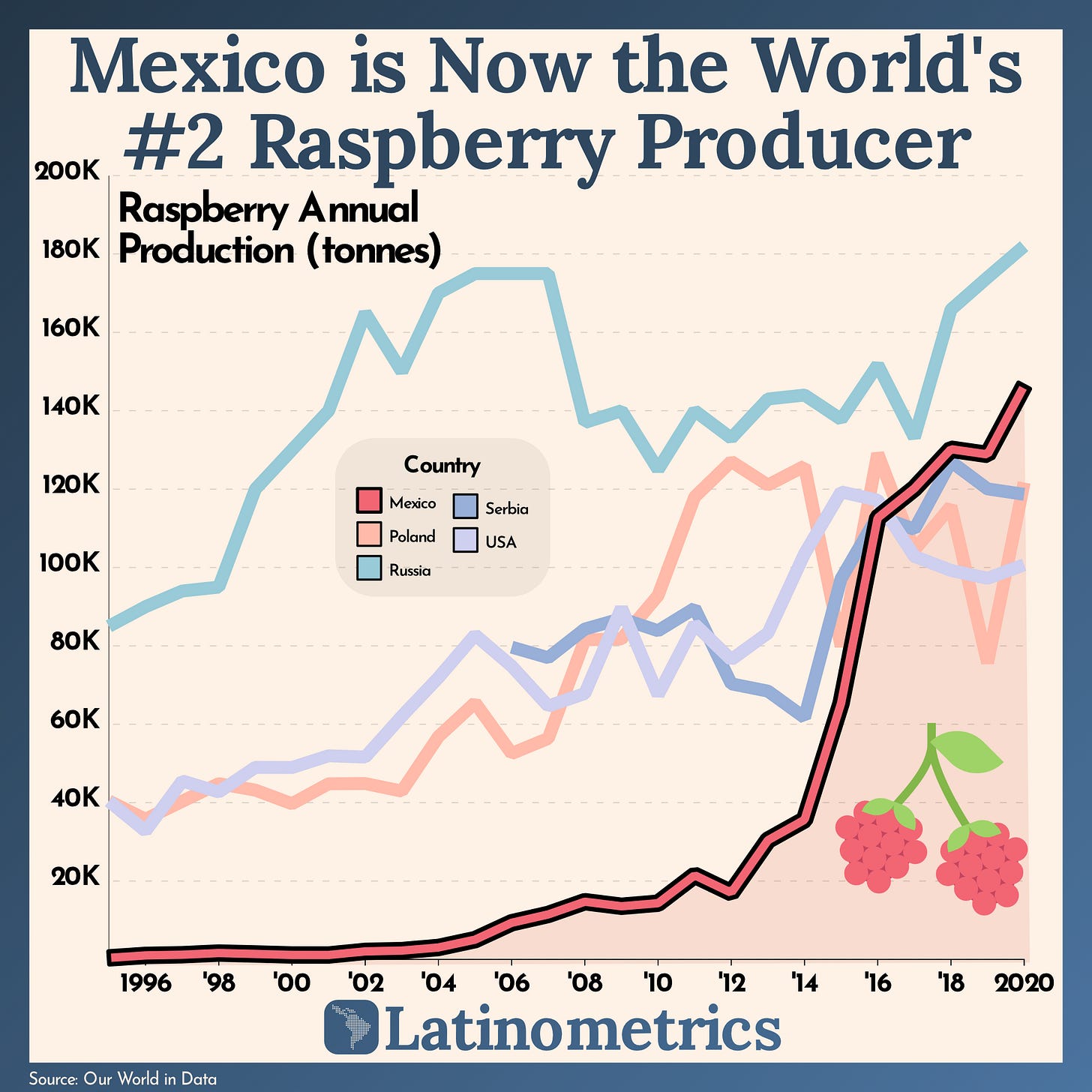November 16th, 2022
Courtesy of Latinometrics, an interesting look at Mexico’s sweet success around raspberry production:

Does this chart look familiar? After publishing the story about blueberries in Peru, someone suggested we look into raspberries in Mexico, which has also exploded — production has grown 128x in 20 years.
Berries are not traditionally part of the Mexican diet. They originated in Turkey and spread to Europe. Early settlers of the US then brought it to the Western Hemisphere, and it became part of their summer diet since the harvest typically comes from June through August.
Only recently has the bright-red fruit, touted for health benefits, started to be consumed in the winter, largely thanks to Mexico’s meteoric rise into the industry. Clever farmers, principally from Jalisco, Baja California, and Michoacan, have made good use of the climate advantage in the country, where they can grow raspberries in the spring, summer, and fall. They time their harvests to the winter when it’s impossible for many producers to compete, and thus prices are at their highest.
Also, thanks partly to the seasonal advantage, but also low production costs, a border to the most prominent market (US), and free trade, Mexico’s production has a very competitive land yield and has grown to become #2 worldwide, just behind Russia.
Aneberries, which unites Mexico’s producers of raspberries, strawberries, etc., stated that the overall berries market would reach 584K tons this year, representing $3B. If that happens, it will make berries the 3rd most significant food export, after beer and avocados, even beating tequila and mezcal combined.
Focusing primarily on The New Seven Sisters - the largely state owned petroleum companies from the emerging world that have become key players in the oil & gas industry as identified by Carola Hoyos, Chief Energy Correspondent for The Financial Times - but spanning other nascent opportunities around the globe that may hold potential in the years ahead, Wildcats & Black Sheep is a place for the adventurous to contemplate & evaluate the emerging markets of tomorrow.
